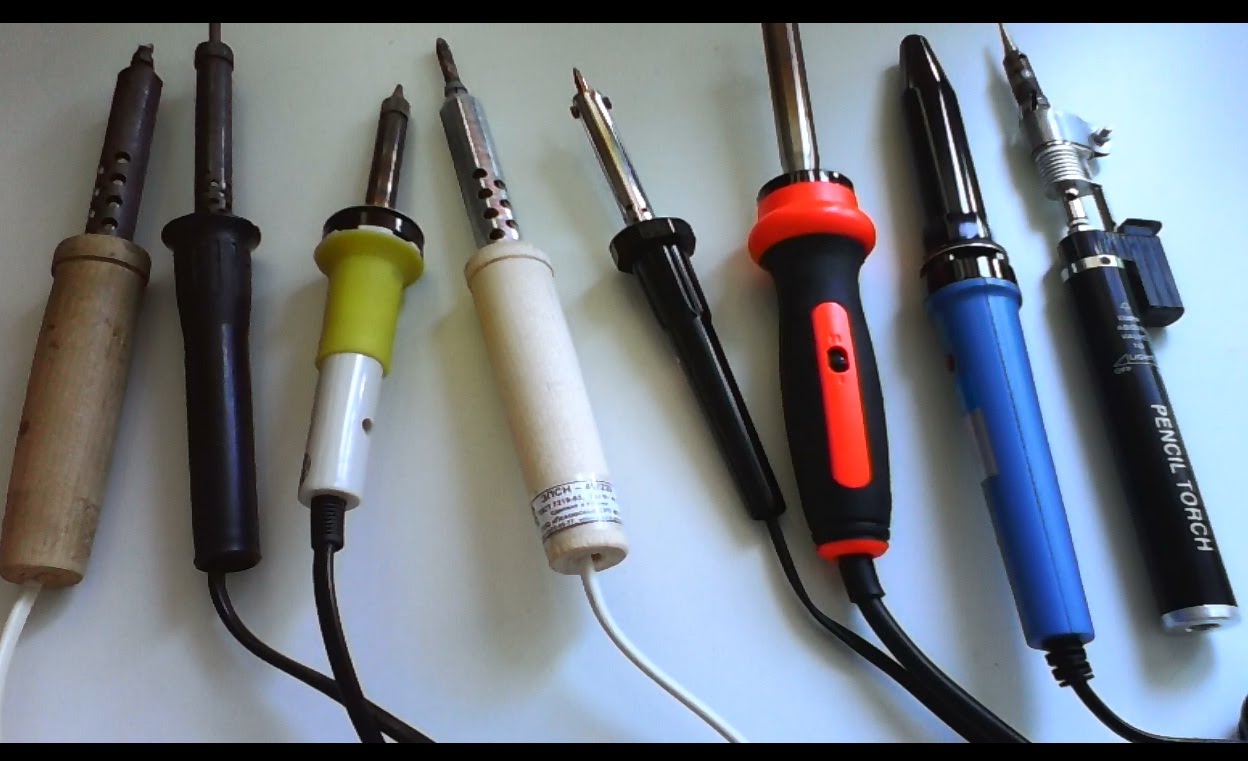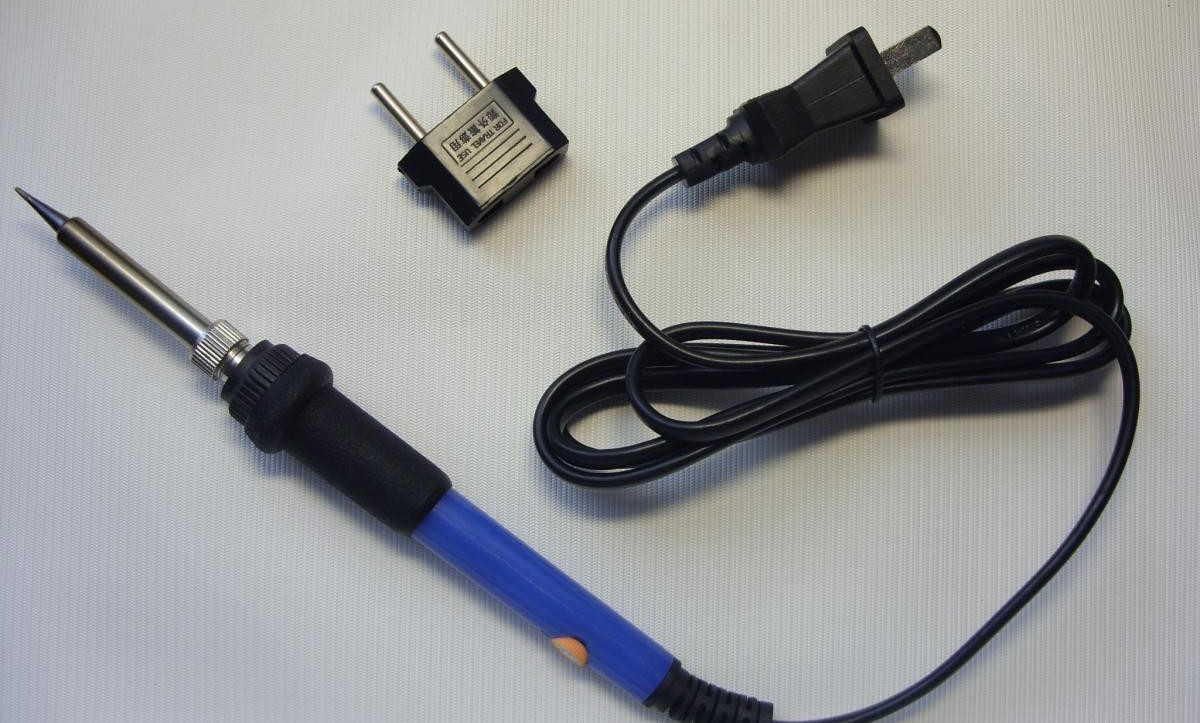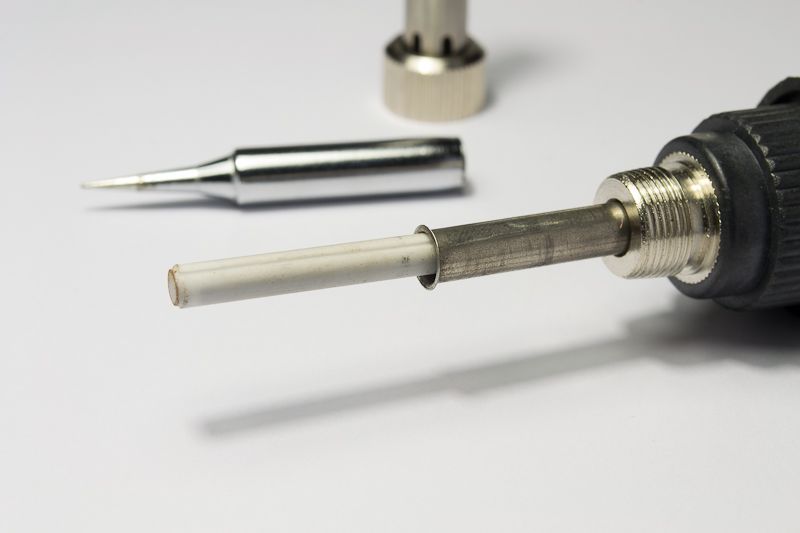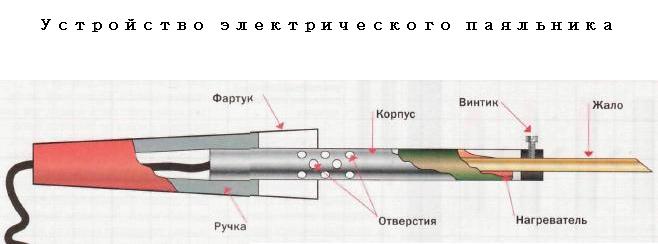In continuation of the cycle of topics of choice for a home tool, let's talk about how to choose a soldering iron. Naturally, the process must be approached with all seriousness in order to choose a really high-quality tool suitable for soldering microcircuits or radio components.
So, the choice of a soldering iron involves paying attention to the points that will be of interest to us:
- Size and power rating;
- Working voltage;
- Type of heating element;
- Thermal insulation of the handle from the heater;
- The presence of adjustment of the length of the sting.
Size and power rating
Dimensions most often depend on its rated power. However, as with all rules, there are exceptions. Usually, there is no need for a tool that is too large for soldering microcircuits. The optimal dimensions would be the following:
- Length from the point of entry of the wire into the handle to the sting - 25 cm;
- The diameter of the sting is no more than 4 mm. This is the question of what kind of sting you need to choose.
- Rated power soldering iron - up to 25 watts.

Choosing a soldering iron will allow you to comfortably solder chips and various other parts. However, if you often do soldering, then it is advisable to have a larger device with a power of 40-60 watts. With it, you can solder bulk contacts, tin various elements, etc.
Working voltage
To choose the right soldering iron for your home, you need to understand the following. The power supply voltage of the tool has no dependence on its power. Based on the supply voltage, you can choose the following tools: 6, 12, 36, 220 Volts. Accordingly, a device for radio amateurs, designed for a voltage of 220 volts, is powered directly from a household outlet. You will need a step-down transformer to work with a tool of a different voltage level.. It is precisely because of this inconvenience that most people prefer a 220 V electric soldering iron. However, the following malfunction may occur: the internal wire may accidentally short to the device case. In this case, you can get an electric shock or if you are soldering a delicate part at this moment, damage it.

It also happens that a soldering iron tip is placed in such a way that it melts its wire. As a result, you will also get unpleasant consequences in the form of switching off switching devices at the input (automatic or traffic jams).
Choosing a soldering iron using a step-down transformer also has its advantages. We can say that individual microcircuits or transistors are afraid of static electricity, as a result of which grounding of the device case is necessary. Such a transformer can now be easily purchased at a store or made on its own. Here to whom, what is closer. The only thing to remember when choosing is that its power must be no less than the rated power of the soldering device.
Heating element type
We continue to study the question of how to choose the right soldering iron. There are several types of devices. The most popular is electric soldering iron for chips with spiral heater (EPSN). In such a device, the heating element is a ceramic tube on which a nichrome wire is spirally wound. From practice, we can say that if you choose this type, you will get the most durable and reliable device.
For example, let's take another fairly popular type of soldering iron for the home - with a ceramic heater. Again, from experience, we can say that they are quite capricious devices. The problems are explained by the design of the heating element: the ceramic plate in which the spiral is located is made of extremely thin wire. If it happens that any liquid gets on the heating element during operation, it will crack, the inner wire will break, and the tool will stop working. A similar fate awaits the device and if it falls unsuccessfully and deforms. Another argument against this type will be the price - it is up to 2 times more expensive than EPSN. Therefore, a good soldering iron will be for everyone.

Thermal insulation of the handle from the heater
In order for you not to burn your hands during work, during the selection process you need to evaluate the insulation of the handle from the heated part of the device. Particular attention should be paid to this moment when it is necessary to choose a soldering iron for the home with a wooden handle.
Most often, to prevent heat transfer to the handle from the heated part, holes are drilled on it. This is done in order to reduce the total area of the metal surface that can heat up, and besides, it contributes to better cooling by heat exchange with air. Accordingly, the greater the number of holes on the metal case, the better the heat will be removed.

It happens that holes are not made, but this requires a long metal case that can quickly dissipate heat.
Another solution for thermal protection of the handle is an apron, which is an extension of the handle. With its help, it is possible to lengthen the body of the device, but without adding length to the entire tool, that is, the body partially passes in the handle. Therefore, when you decide which soldering iron to buy for electronics, then pay attention to the presence of this element.
Blade length adjustment
When people are looking into which soldering iron to choose, they often pay attention to the presence of an adjustable tip. Tin-lead solder, which is the most common in soldering, reduces sting over time. As a result, we have dimples, notches, shells at the tip. Their presence greatly interferes with the soldering process, but they are removed quite easily - by file processing. However, this method of eliminating notches has its drawback - with constant processing, the sting will decrease in length. Of course, if you solder from time to time, this moment will not be very relevant for you, but if you are a regular user of this tool, then the problem can be acute and then you need to choose the appropriate soldering iron. However, this feature is not the most terrible. The thing is that the process of eating the sting with solder occurs the sooner, the higher the temperature. That is, the shorter the length of the tip, the higher the temperature at the end of the working part will be, and the sooner the process of devouring the tip will occur..

